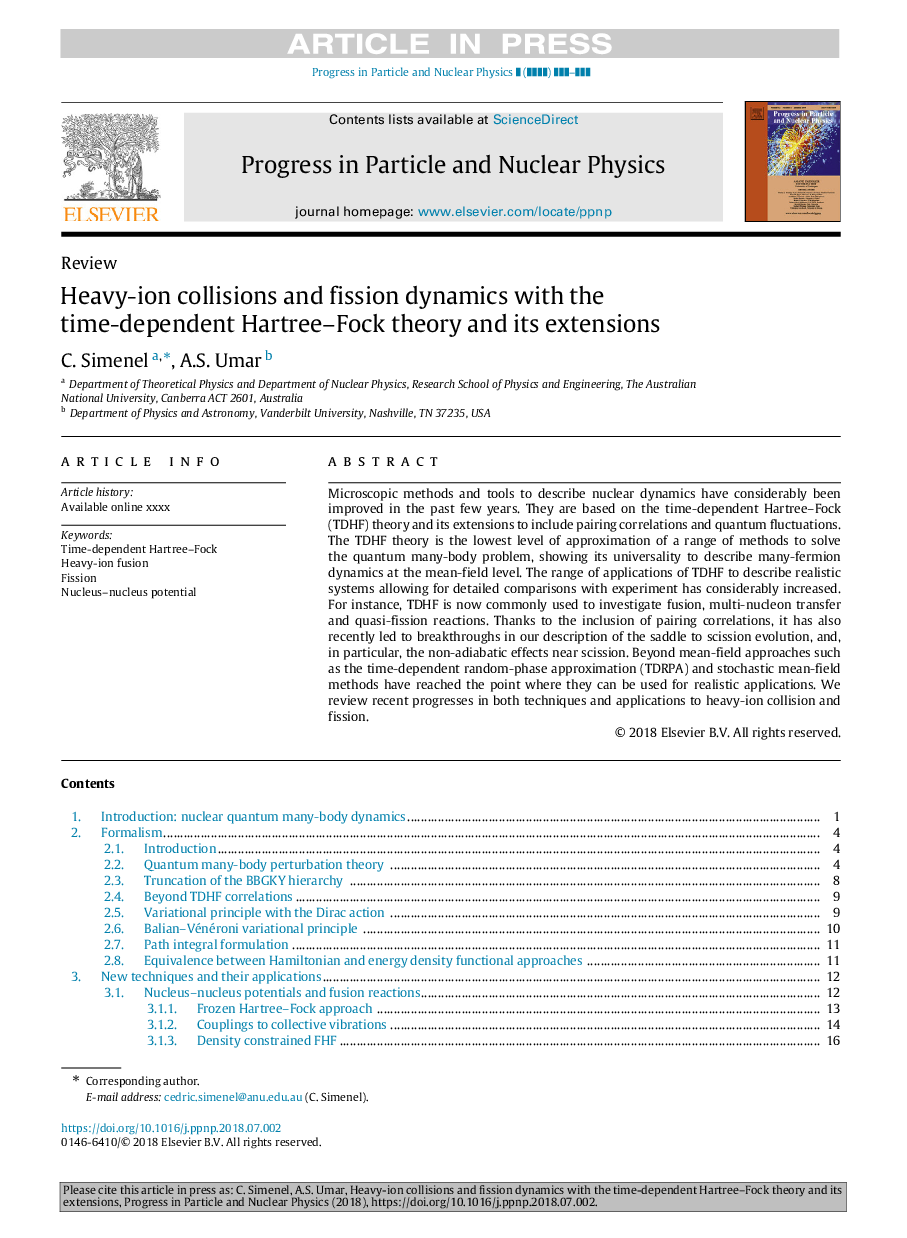| Article ID | Journal | Published Year | Pages | File Type |
|---|---|---|---|---|
| 10156529 | Progress in Particle and Nuclear Physics | 2018 | 48 Pages |
Abstract
Microscopic methods and tools to describe nuclear dynamics have considerably been improved in the past few years. They are based on the time-dependent Hartree-Fock (TDHF) theory and its extensions to include pairing correlations and quantum fluctuations. The TDHF theory is the lowest level of approximation of a range of methods to solve the quantum many-body problem, showing its universality to describe many-fermion dynamics at the mean-field level. The range of applications of TDHF to describe realistic systems allowing for detailed comparisons with experiment has considerably increased. For instance, TDHF is now commonly used to investigate fusion, multi-nucleon transfer and quasi-fission reactions. Thanks to the inclusion of pairing correlations, it has also recently led to breakthroughs in our description of the saddle to scission evolution, and, in particular, the non-adiabatic effects near scission. Beyond mean-field approaches such as the time-dependent random-phase approximation (TDRPA) and stochastic mean-field methods have reached the point where they can be used for realistic applications. We review recent progresses in both techniques and applications to heavy-ion collision and fission.
Related Topics
Physical Sciences and Engineering
Physics and Astronomy
Nuclear and High Energy Physics
Authors
C. Simenel, A.S. Umar,
